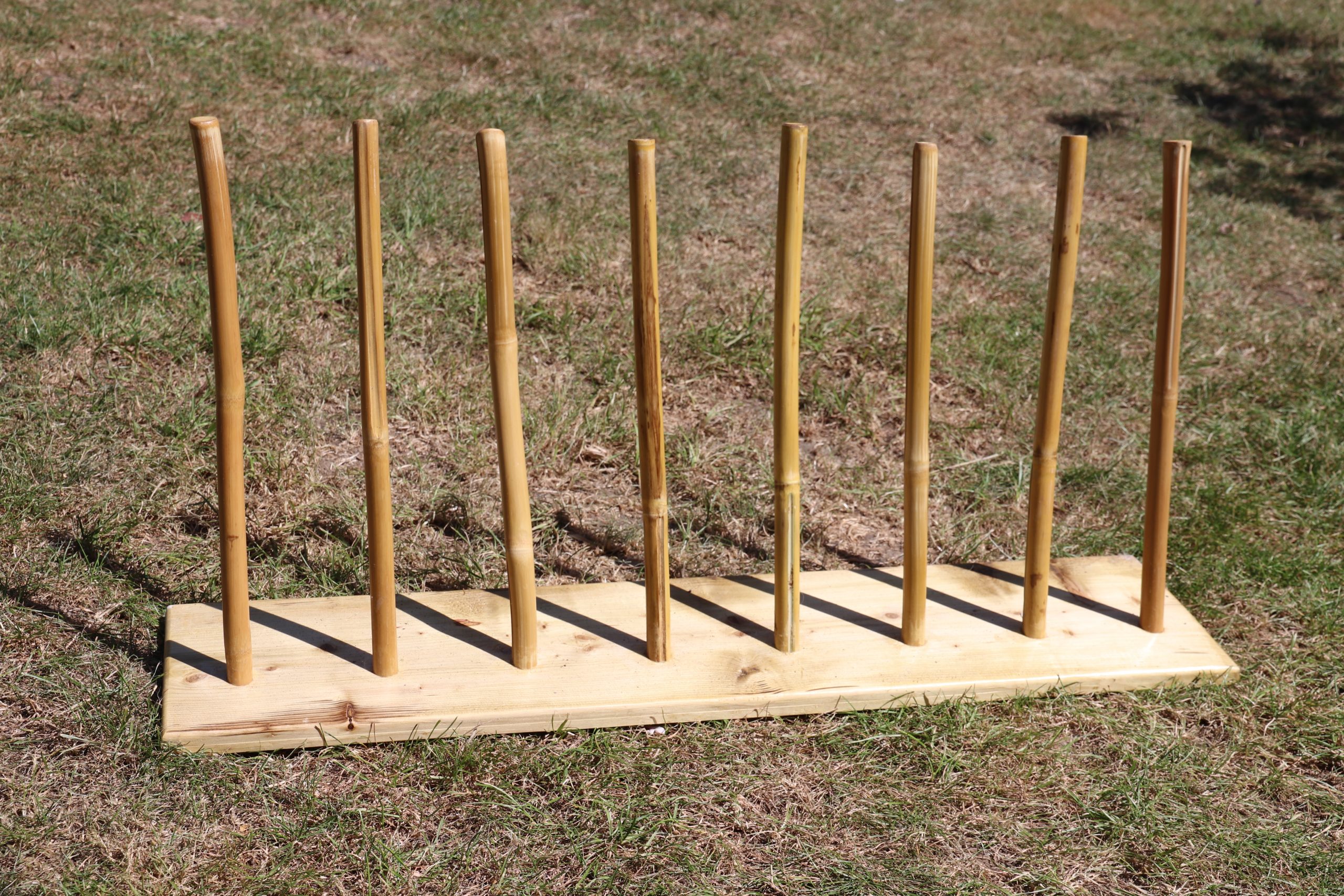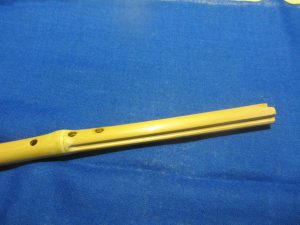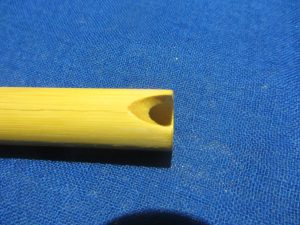My family have been asking me to make a boot rack for a while. My Father wanted something made with the bamboo from the garden for his birthday. Hence: bamboo boot rack.
The credit for the idea must fall with my brother, although his concept was more of a lashed bamboo construction.
Bamboo Posts
We started by measuring how long a section of bamboo was needed to fit in a boot and then searched for eight reasonably straight sections of bamboo with similar widths with a node at one end. The idea being that the node would give a solid end to go at the top. Unfortunately, when cutting across the nodes, only half of them ended up being solid. We then set about sanding down the bamboo sticks. We initially tried using a flap wheel on the polisher, but it was fairly uneven so we ended up just doing it by hand, going through 80, 120 and 240 grits of sandpaper.
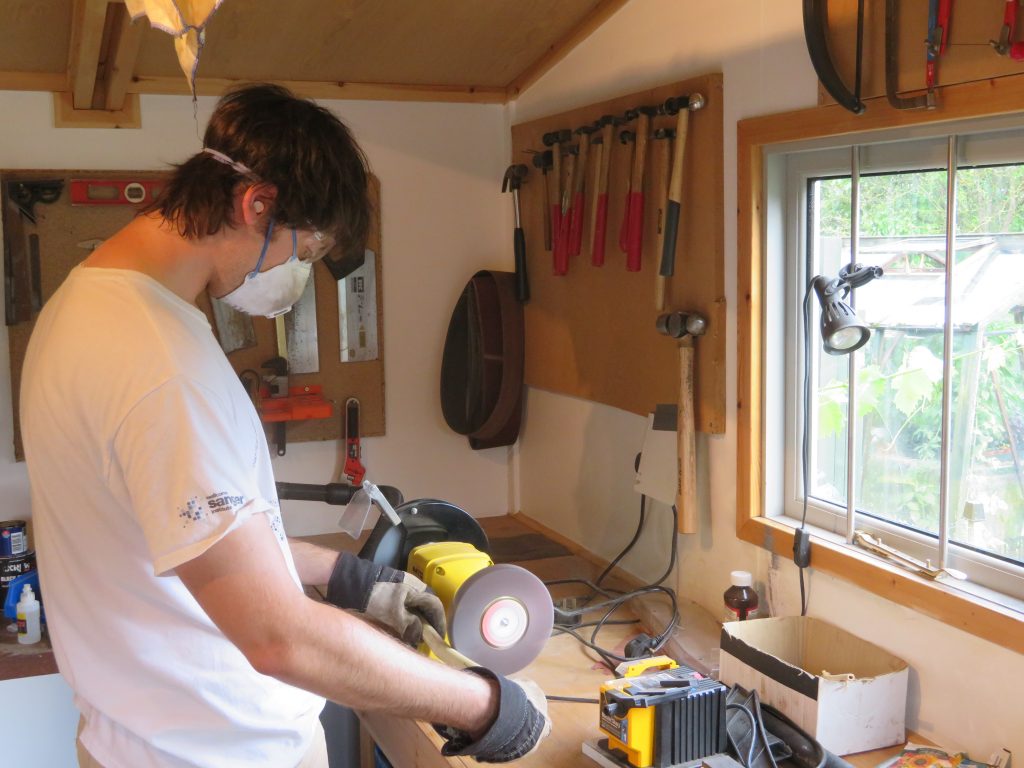

The Base
I found a rather weathered and warped old plank that was about the right size, and when I planed off a small section the wood inside seemed pretty good, so I set about planing it down to a clean flat board. I could have put a little more time into this as there were still some discoloured areas that show quite well once the finish was applied. After planing it, I rounded over the top edges with a router and sanded the board all over.
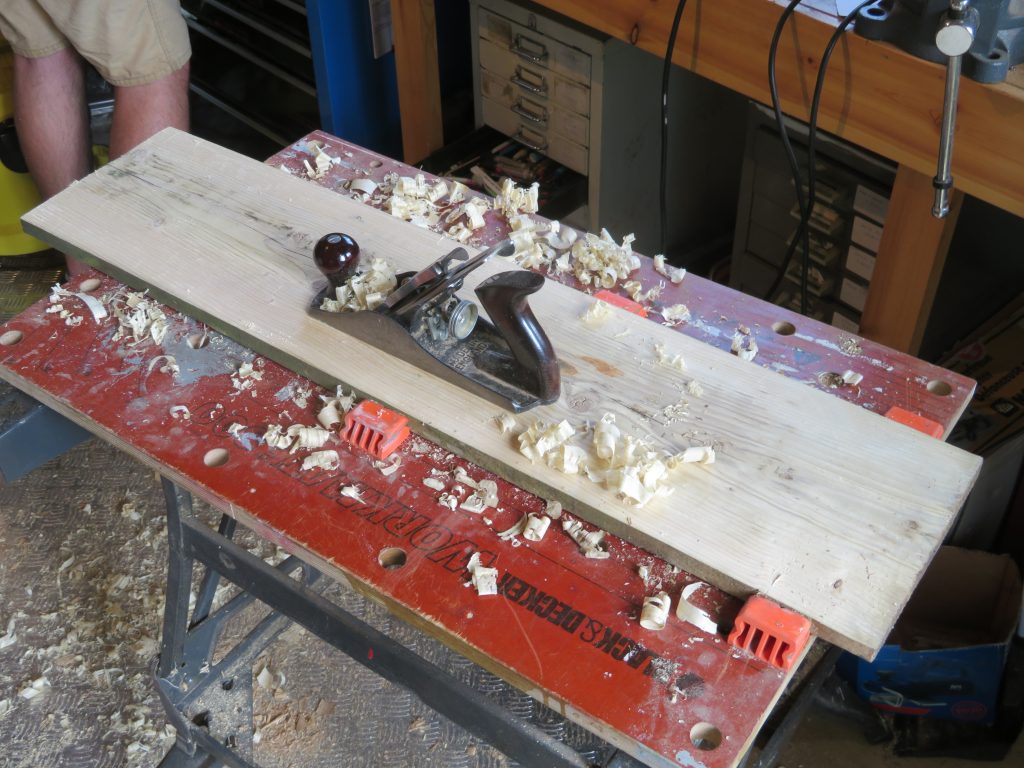
Assembly
We decided to fit the bamboo posts into holes in the base. This is slightly tricky as all the bamboo posts are slightly different sizes do not have a circular cross section. We measured the diameters of each of the posts to work out what size drill bit to use for each, aiming slightly undersized so the holes can be expanded and the posts tapered to give a tight fit.
The posts also needed to be at an angle do the boots will sit correctly and the whole thing won’t tip over. unfortunately the holes need to be angled in a plane that my drill press will not do. We spent a fair while trying to set up an arrangement to drill all the holes at the same angle using the press but eventually gave up and used a hand drill using a wedge cut at the correct angle as a guide. We then worked filed out each hole with a round file and sanded a taper onto the end of each post with the belt sander until there was a good fit. The posts were then glued in with wood glue.
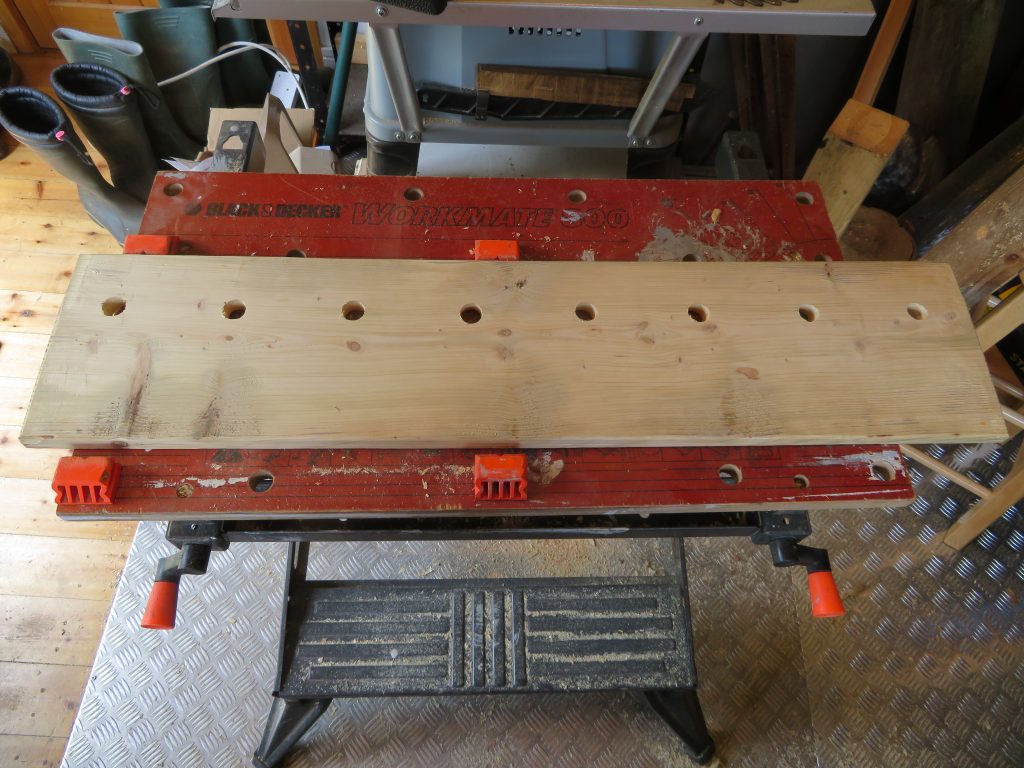

There were still some gaps around the base of the posts and holes at either end. We decided to use a mixture of wood filler and glue to fill the holes as plain wood filler was too dry and not sticky enough. This wasn’t a very good idea. Our concoction needed large amounts to completely plug the holes, especially the larger ones at the bottom and then took forever to dry.
Because of the deadline of our dad’s birthday we eventually gave up waiting for it to fully set and applied the finish, which was danish oil.


